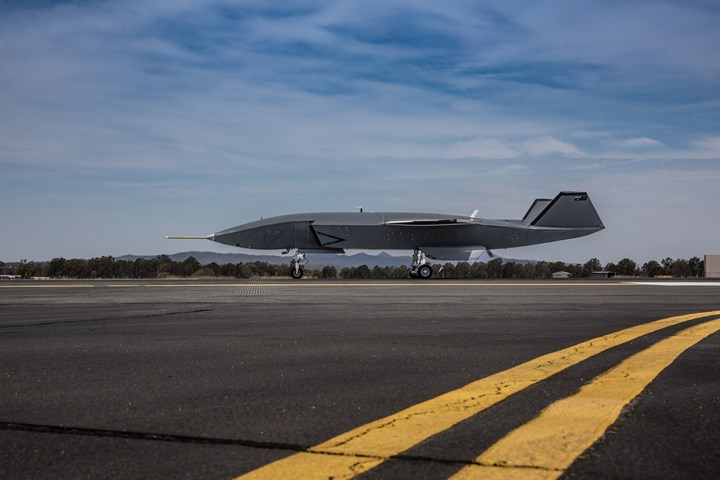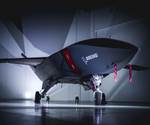Unmanned Loyal Wingman aircraft performs low-speed taxi test
Reaching maximum speeds of 16 mph on the ground, the low-speed taxi determined the Loyal Wingman’s runaway independence for its maiden flight later this year.

Photo Credit: Boeing
The Loyal Wingman, an unmanned aircraft prototype being developed by a Boeing-led Australian industry team with the Royal Australian Air Force (RAAF), took to the runway on Oct. 22, completing its first low-speed taxi as part of tests and preparations for a maiden flight slated for later this year.
“Air Force partners with industry to ensure we can find innovative solutions to meet our future priorities,” says Air Vice-Marshal Cath Roberts, RAAF head of Air Force Capability. “Boeing’s Loyal Wingman project is a perfect example of what this collaborative approach can achieve.”
Reaching a maximum speed of 14 knots (approximately 16 miles per hour (mph), or 26 kilometers per hour (kph)), on the ground, the aircraft demonstrated several activities while maneuvering and stopping on command.
“The low-speed taxi enabled us to verify the function and integration of the aircraft systems, including steering, braking and engine controls, with the aircraft in motion,” says Paul Ryder, Boeing Australia Flight Test manager.
Three Loyal Wingman prototypes will be the foundation for the Airpower Teaming System that Boeing will offer customers worldwide. In addition to using artificial intelligence to extend the capabilities of manned and unmanned platforms, the aircraft maintains an advanced design, including a modular nose section that’s customizable for specific needs and a conventional takeoff and landing approach that is said to be suitable for many missions and runway types. Boeing recently announced that a partnership with Queensland, Australia, to design, engineer and manufacture the military aircraft.
“Runway independence ensures the aircraft will be a highly flexible and adaptable system for our global customers,” comments Dr. Shane Arnott, program director, Boeing Airpower Teaming System. “This latest test marks the first full unmanned movement of the Loyal Wingman with our Australian partners and takes us a step closer to first flight.”
See “Boeing announces first unmanned Loyal Wingman defense aircraft.”
Related Content
-
Active core molding: A new way to make composite parts
Koridion expandable material is combined with induction-heated molds to make high-quality, complex-shaped parts in minutes with 40% less material and 90% less energy, unlocking new possibilities in design and production.
-
3D-printed CFRP tools for serial production of composite landing flaps
GKN Aerospace Munich and CEAD develop printed tooling with short and continuous fiber that reduces cost and increases sustainability for composites production.
-
Automated robotic NDT enhances capabilities for composites
Kineco Kaman Composites India uses a bespoke Fill Accubot ultrasonic testing system to boost inspection efficiency and productivity.















